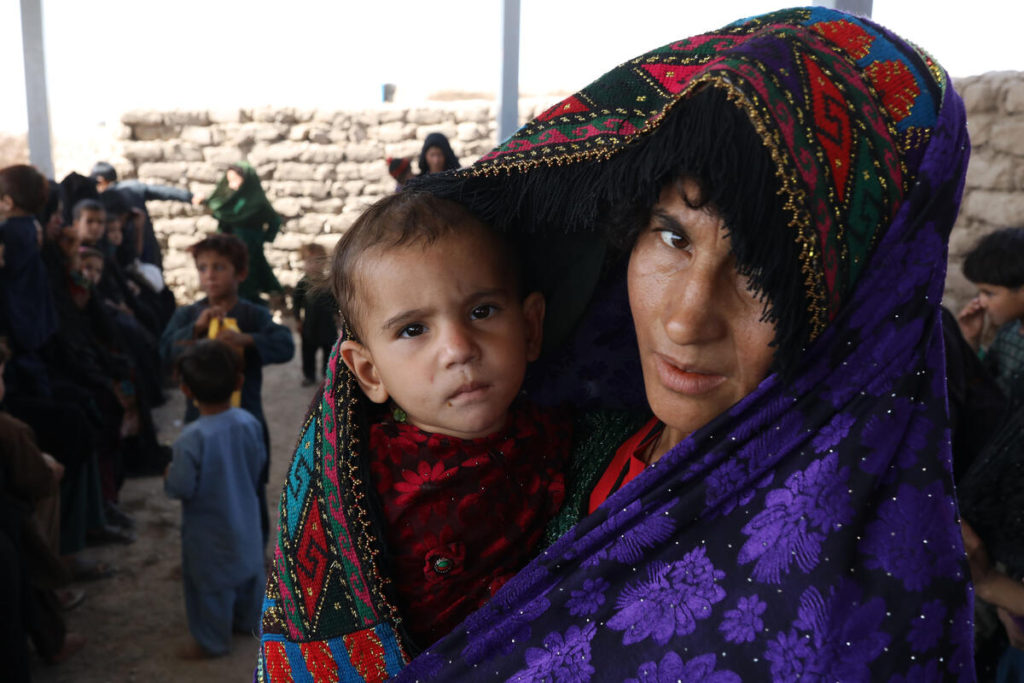Kabul/New York, May 9 – An estimated 19.7 million Afghan people, or nearly half of the country’s population, are facing acute hunger because of a series of setbacks, including drought, years of conflict and the on-going war in Ukraine which is causing a global shortage in wheat and other commodities, the Food and Agriculture Organization (FAO) and World Food Program (WFP), two major UN agencies specialized in food, said in a joint report.
The Integrated Food Security Phase Classification (IPC) analysis, conducted in January and February 2022 warned of “catastrophic levels” of food insecurity know as IPC Phase 5 that has been detected in the north-eastern province of Ghor, with a population of 20,000 people. It said the catastrophic levels of hunger are caused by a long period of harsh winter and disastrous agricultural conditions.
Read report: Afghanistan IPC Report,
(NOTE: Definitions provided by the UN: Acute food insecurity is when a person’s inability to consume adequate food puts their lives or livelihoods in immediate danger. Chronic hunger is when a person is unable to consume enough food over an extended period to maintain a normal, active lifestyle.)
“Unprecedented levels of humanitarian assistance focused on bolstering food security have made a difference. But the food security situation is dire. Humanitarian assistance remains desperately important, as do the needs to rebuild shattered agricultural livelihoods and re-connect farmers and rural communities to struggling rural and urban markets across the country. Unless these happen, there will be no way out of this crisis,” said Richard Trenchard, FAO Representative in Afghanistan.
Mary-Ellen McGroarty, WFP’s Country Director and Representative in Afghanistan, said, “Food assistance and emergency livelihood support are the lifeline for the people of Afghanistan. We mounted the world’s largest humanitarian food operation in a matter of months, reaching more than 16 million people since August 2021.”
“We are working with farmers, millers, and bakeries, training women and creating jobs to support the local economy. Because the people of Afghanistan would much prefer jobs; women want to be able to work; and all girls deserve to go to school. Allowing the economy to function normally is the surest way out of the crisis, otherwise suffering will grow where crops cannot,” she added.
The report predicted that the food security outlook for June-November 2022 may see a slight improvement, including a reduction in the acute food insecurity cases to 18.9 million people due in part to the coming wheat harvest during the May-August period and this year’s “well-coordinated scale-up of humanitarian food assistance – alongside increased agricultural livelihood support.”
But the report said the slight improvement may be limited because of lingering drought and the country’s economic crisis, which means that hunger will remain a threat to millions of people in Afghanistan.
The war in Ukraine will continue to put pressure on Afghanistan’s wheat supply, food commodities, agricultural inputs and fuel prices, the report said. It said access to seeds, fertilizer and water for irrigation is limited, labour opportunities are scarce and enormous debts have been incurred to buy food over the last few months.
FAO and WFP said they will continue to scale up programs across Afghanistan while WFP has reached more than 16 million people so far in 2022 with emergency food assistance, and is supporting local markets, working with retailers and local suppliers. WFP continues to invest in people’s livelihoods through skills training and climate adaption projects so that families can cultivate their land and grow their own food. FAO said it will continue to scale up its assistance to farmers and herders in rural areas and will assist more than 9 million people in 2022 through a range of interventions supporting crop, livestock and vegetable production, cash transfers and the rehabilitation of vital irrigation infrastructure and systems.
“Supporting agriculture is a cost-effective and strategic intervention that delivers great short-term impact as lifesaving support, while it paves the way for longer-term recovery and sustainable development,” the two agencies said.
UN protests Taliban’s order forcing Afghan women to wear hijab and stay home
The UN assistance mission in Afghanistan (UNAMA) issued the following statement on May 7 to protest the order:
“UNAMA is deeply concerned with today’s announcement by the Taliban de facto authorities that all women must cover their faces in public, that women should only leave their homes in cases of necessity, and that violations of this directive will lead to the punishment of their male relatives. Information that UNAMA has received suggests this is a formal directive rather than a recommendation, and that it will be implemented and enforced.
This decision contradicts numerous assurances regarding respect for and protection of all Afghans’ human rights, including those of women and girls, that had been provided to the international community by Taliban representatives during discussions and negotiations over the past decade. These assurances were repeated following the Taliban takeover in August 2021, that women would be afforded their rights, whether in work, education, or society at large.
The international community has been eager for signals that the Taliban are ready for positive relations with the wider world. The decision six weeks ago to postpone secondary schooling for Afghan girls was widely condemned internationally, regionally, and locally. Today’s decision by the Taliban might further strain engagement with the international community.
UNAMA will immediately request meetings with the Taliban de facto authorities to seek clarification on the status of this decision. UNAMA will also engage in consultations with members of the international community regarding its implications.”
United Nations correspondent journalists – United Nations correspondent journalists – United Nations correspondent journalists
United Nations journalism articles – United Nations journalism articles – United Nations journalism articles

